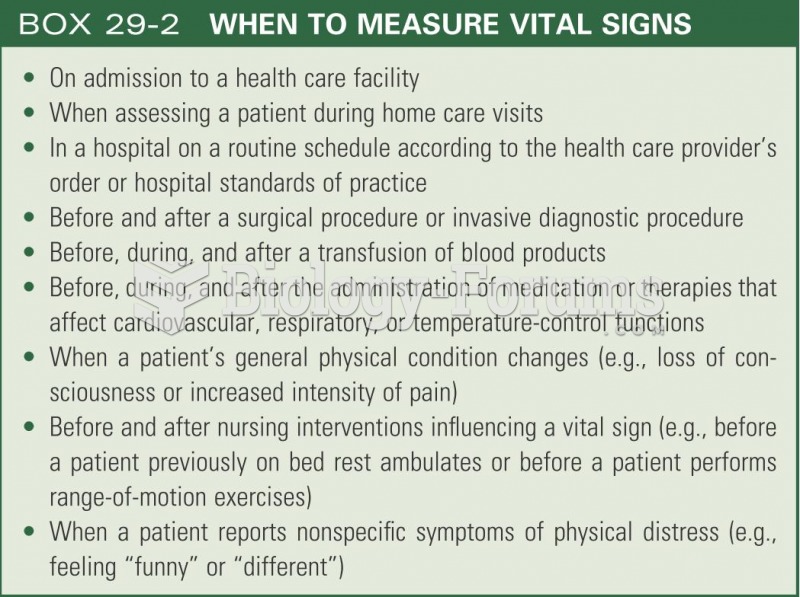Answer to Question 1
Correct Answer: 1
Rationale 1: The cardiac catheterization client will need a thorough assessment since she is just returning to the nursing unit. Invasive procedures, such as a catheterization, will need to be closely assessed. More than likely a Doppler will be needed to ensure the pedal pulse is present and stable in the extremity used during the procedure. Unlicensed personnel are not usually delegated Doppler ultrasound device use.
Rationale 2: The COPD client is a chronic condition client, and her vital signs would be considered routine.
Rationale 3: The client with pneumonia nearing discharge would be considered medically stable. Therefore, this client is within the UAP's capability.
Rationale 4: The client who is 2 days post-op from gallbladder surgery would be considered medically stable. Therefore, this client is within the UAP's capability.
Answer to Question 2
Correct Answer: 4
Rationale 1: Allowing the client to take a few deep breaths will help but not quickly enough to compensate for the hypoxia experienced.
Rationale 2: Continuing to suction continuously or intermittently will only decrease the saturation levels more.
Rationale 3: Leaving the catheter in place obstructs air flow, thus compromising an already poor situation.
Rationale 4: Not only does suctioning remove secretions, but it also removes the client's air. By stopping suctioning, the RN stops removing both. This allows the client to recoup from the procedure, and giving oxygen will also increase the saturation ability back to a normal range.






